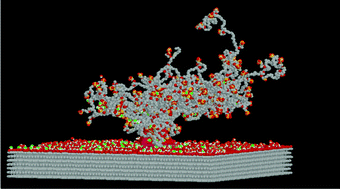Impact of oxidation on nanoparticle adhesion to carbon substrates
Abstract
Carbon supported platinum (Pt/C)

* Corresponding authors
a Department of Chemical and Biomolecular Engineering, University of Tennessee, Knoxville, TN, USA
b
Department of Materials Science and Engineering, University of Tennessee, Knoxville, TN 37996, USA
E-mail:
dkeffer@utk.edu, dkeffer@utk.edu
Fax: 1 865 974 4115
Tel: 1 865 974 5322
c Center for Nanophase Materials Science, Oak Ridge National Laboratory, Oak Ridge, TN 37830, USA
Carbon supported platinum (Pt/C)

 Please wait while we load your content...
Something went wrong. Try again?
Please wait while we load your content...
Something went wrong. Try again?
Q. He, D. C. Joy and D. J. Keffer, RSC Adv., 2013, 3, 15792 DOI: 10.1039/C3RA42767F
To request permission to reproduce material from this article, please go to the Copyright Clearance Center request page.
If you are an author contributing to an RSC publication, you do not need to request permission provided correct acknowledgement is given.
If you are the author of this article, you do not need to request permission to reproduce figures and diagrams provided correct acknowledgement is given. If you want to reproduce the whole article in a third-party publication (excluding your thesis/dissertation for which permission is not required) please go to the Copyright Clearance Center request page.
Read more about how to correctly acknowledge RSC content.
 Fetching data from CrossRef.
Fetching data from CrossRef.
This may take some time to load.
Loading related content
